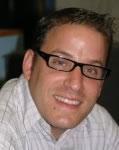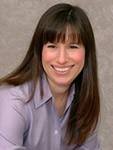The chanting of the Torah is an ancient practice. There are lots of precedents and reasons offered, as you will see below. That said, there is also evidence that some communities may have opted to read instead of chant. In particular, the Reform Movement has a history of reading the Torah for public services. Here is a brief review of the data, pro and con.
Ezra introduced the practice of reading the Torah aloud, as we learn in the book of Nehemia. It is not known if the Torah was chanted in that period, although the chanting of sacred texts was a common practice in the ancient world. There are accounts that in ancient Alexandria the Torah was read with simultaneous translation, which suggests that it may have been read rather than chanted in that setting.
Based on a few passages in the Talmud it seems that chanting was the norm. B.Nedarim 37b records a debate regarding pay for one who teaches Torah to a child. Since you may not be paid for Torah study, the text suggests that the pay was for some associated task, such as teaching the cantillation. This provides evidence that the practice extends back to that time, and that it was a common component to the teaching of Torah for children. Rabbi Yochanan, a third century Palestinian Amora, asserts that chanting is so important that one who opted not to chant offended God. He taught that anyone who studied Torah or Mishnah without chanting the text conformed to the dark words of Ezekiel: "Moreover, I (God) gave them laws that were not good and rules by which they could not live" (Ezekiel 20:25; BT Megillah 32a).
Jacob Neusner, in Judaism's Theological Voice:The Melody of the Talmud, argues that from the very first moment at Mt. Sinai we hear God's voice as singing because that puts us dramatically in the present. Words can be read over and over, but music “comes into being at the moment of performance”, hence when we hear the Divine word chanted we recreate the experience of Mt. Sinai. He writes, “singing serves to transform secular study into sacred service.” Chanting, he asserts, transforms the experience of hearing Torah in a way that reading does not.
On the other side of the coin, a Responsa from the Central Conference of Reform Rabbis includes a history of reading the Torah at public services. (http://data.ccarnet.org/cgi-bin/respdisp.pl?file=153&year=carr) They note that “Israel Jacobson, the founder of the Reform Movement, sought to remove the cantillation along with other forms of music which had become distasteful, as for example, the singing of the cantor accompanied by a bass and a soprano, one standing on each side and harmonizing.” Rabbi Mark Washofsky notes in his book, Jewish Living (pg 28) that “Rabbi Isaac Meyer Wise expressly provides that 'the sections from the Pentateuch are read in a style agreeable to modern delivery...” I understand that to mean that reading or chanting is acceptable. There are many Reform congregations which prefer the reading of the Torah today.
Here are two reasons I have heard for why a community may prefer to read Torah. First, there may not be a qualified teacher who can help readers with the nuances of this art. It is not simply a matter of reading notes off a page, not an easy skill in its own right, but of being able to make the notes and the words fit appropriately. Second, there are many places where a simultaneous translation is offered alongside the reading and the two fit together better when the Torah is read. This practice helps the listener better understand the text that is being presented, adding an element of Torah study alongside that of Torah reading. For many places this is a desirable goal.
This brief history suggests that precedents exist for either reading or chanting the Torah during a public service. It does not, however, say that the decision resides with the individual. Different communities have different standards and when an individual or a family join that community they implicitly agree to abide by those standards. It would be disruptive if one who regularly attended services heard reading one week and chanting the next. Continuity adds to the spiritual impact of a service.
There are occasions when a student simply is incapable of learning certain prayers or chants. In those cases (rare in my experience) I would hope that a community would find a tactful way of accommodating the needs of that individual. Bar or Bat Mitzvah should not be an occasion for trauma or exclusion. Still, the decision should come from a dialogue that considers the needs of the student and the custom of the community.









